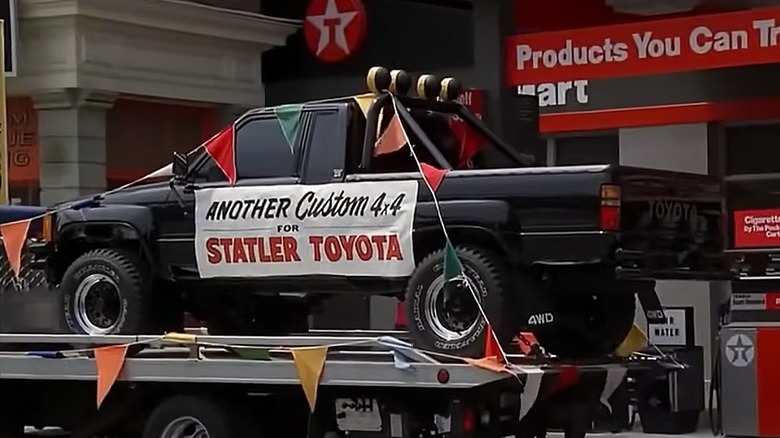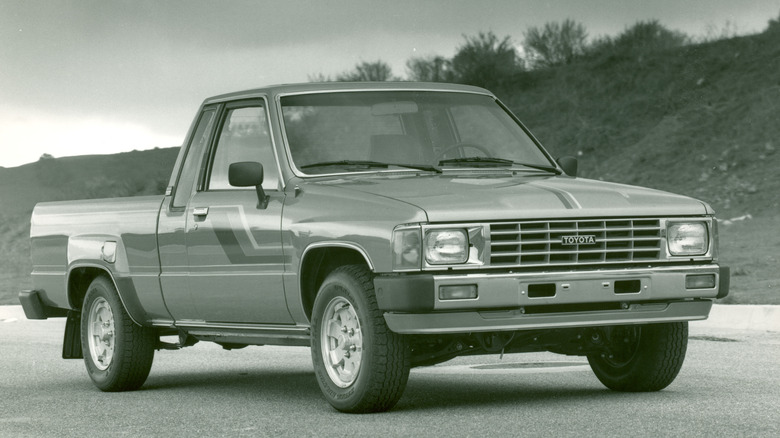Here's Why The 1985 Toyota Hilux Isn't As Cool As You Remember
When you picture a Toyota pickup truck from the 1980s, you're probably imagining the 1985 Toyota from the "Back to the Future" movies, with huge KC rally lights, a roll bar in the bed, brush guards, skid-plates galore, and a decent lift. While Marty McFly's dream truck is undoubtedly cool and would surely be a blast to jump over dunes with, the actual Toyota truck of the 1980s wasn't as exciting. The modifications that make the "Back to the Future" truck so alluring are about as far away from factory specifications as you could get and would likely cost a small fortune back then.
In overseas markets, it was called the Hilux, a truck known around the world for being indestructible, but in the United States, it was just called the Toyota pickup or Toyota truck. In reality, it was not as brash as you may remember. Not to say it was a bad truck overall, but the primary customer demographic of the 1980s Toyota was probably closer to a contractor or tradesman than a hoverboarding guitar-playing teenager.
A more utilitarian Toyota
The truck you'd see driving around in the 1980s would be closer to the Pizza Planet Toyota than the pickup in "Back to the Future." While four-wheel drive versions of the iconic Toyota truck existed and were offered from the factory with an independent front suspension, it was definitely for a more utilitarian reason than just hopping around dunes. Horsepower for the truck's standard four-banger was a scant 97 horsepower. Toyota eventually offered a turbocharger that boosted the power to 135 horsepower, but that's still not a ton compared to any modern truck or dedicated off-roader.
Unless you lived in Marty McFly's fictional town of Hill Valley in 1985, the Toyota truck you'd see rolling around town likely wouldn't have sported aftermarket off-roading mods of any sort. The person driving might be able to help you fix your gutters, but off-road machine, it was not.
Still, even if the stock version of the truck was slow, boring, and staid, it wasn't a bad vehicle by any means and did a tremendous part in solidifying Toyota's truck offerings in the United States. Without the basic truck taking off in popularity, Toyota might not have pumped so much time, effort, and money into making the later Tacoma the dual-purpose work-and-play machine it is today.

